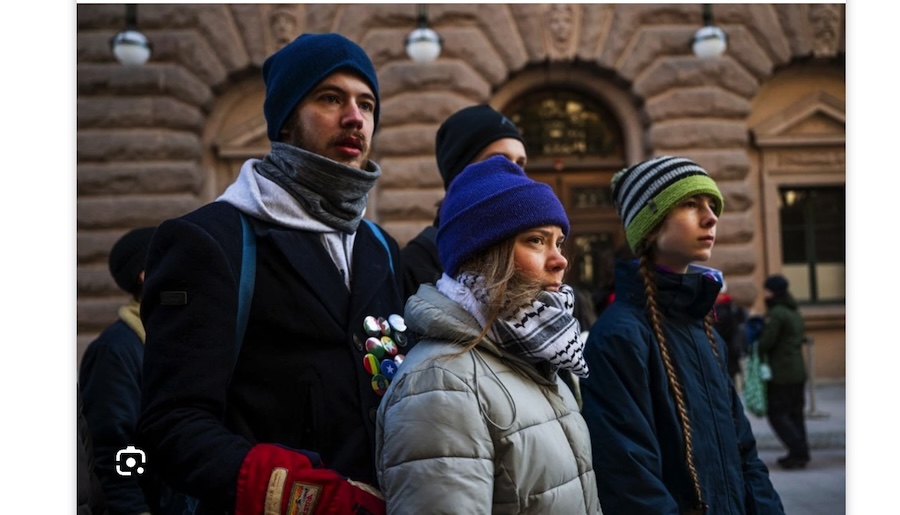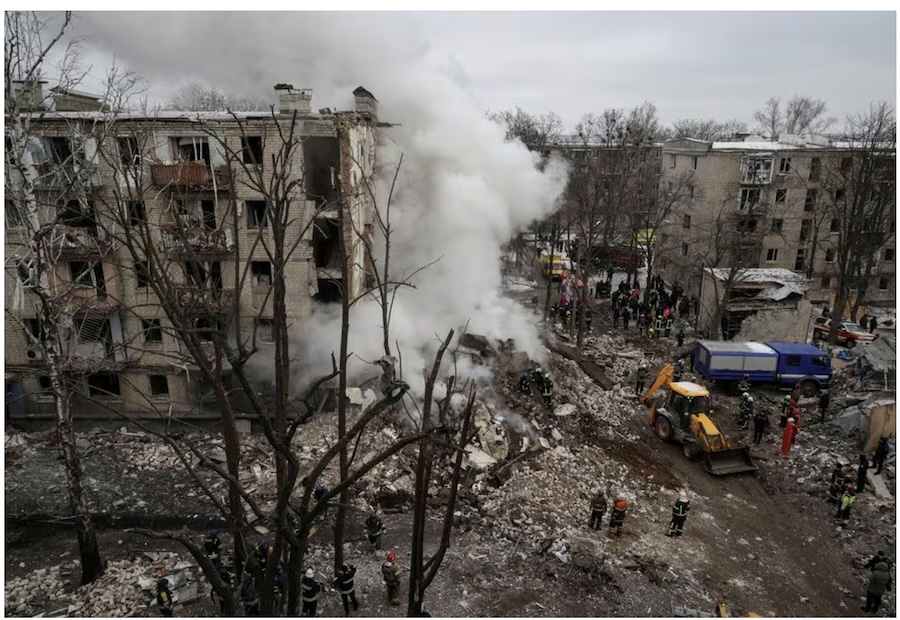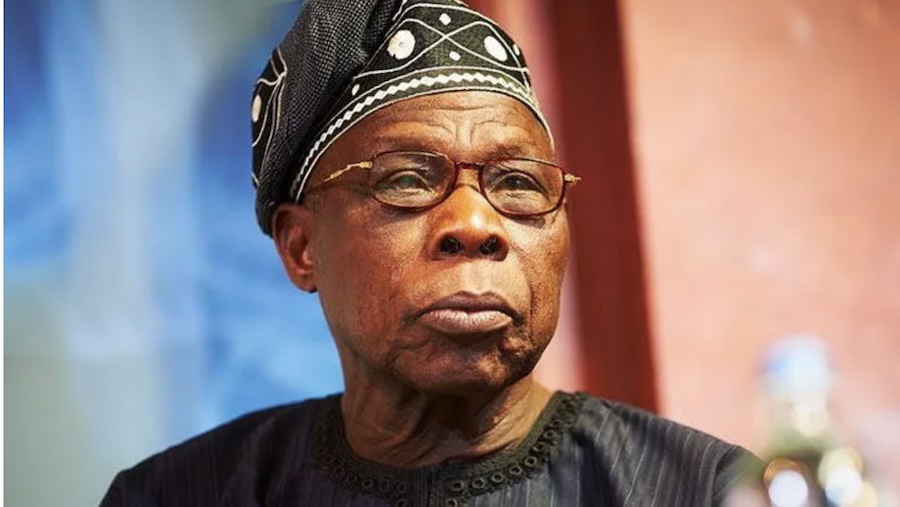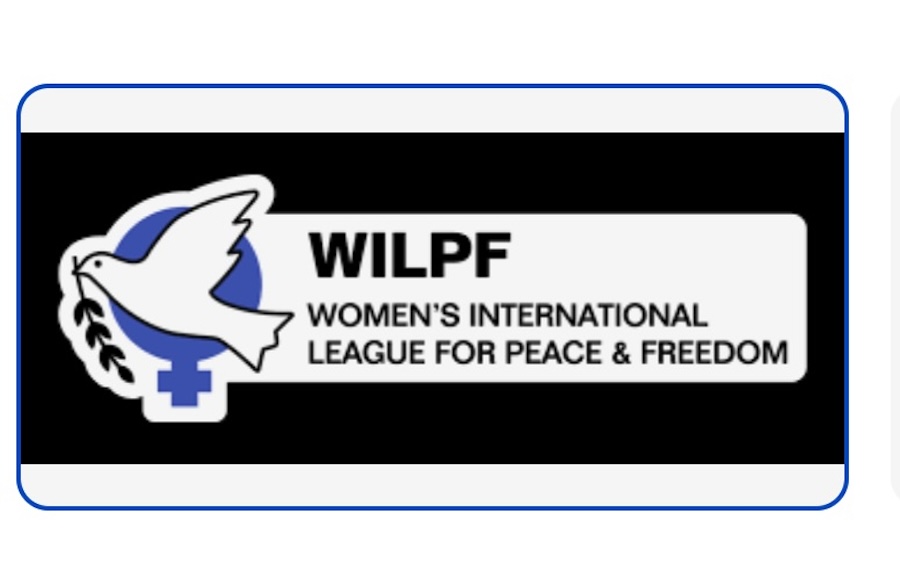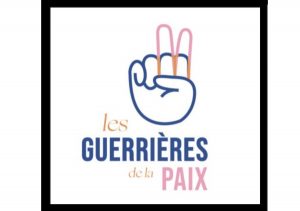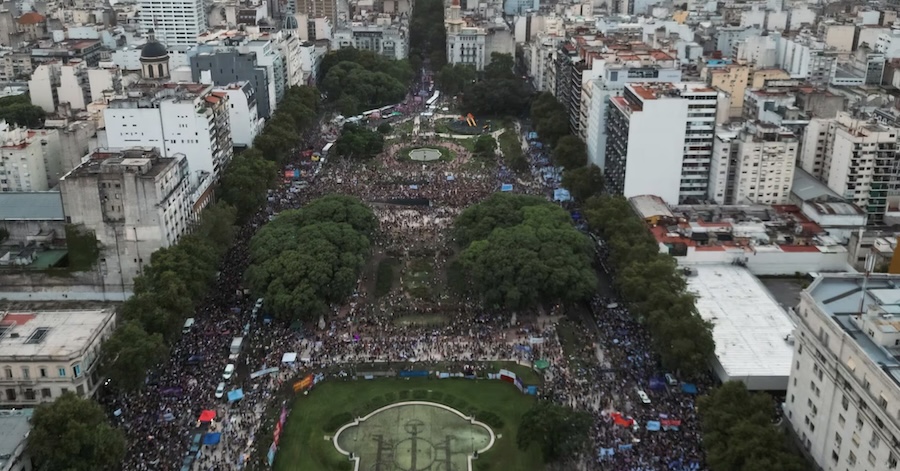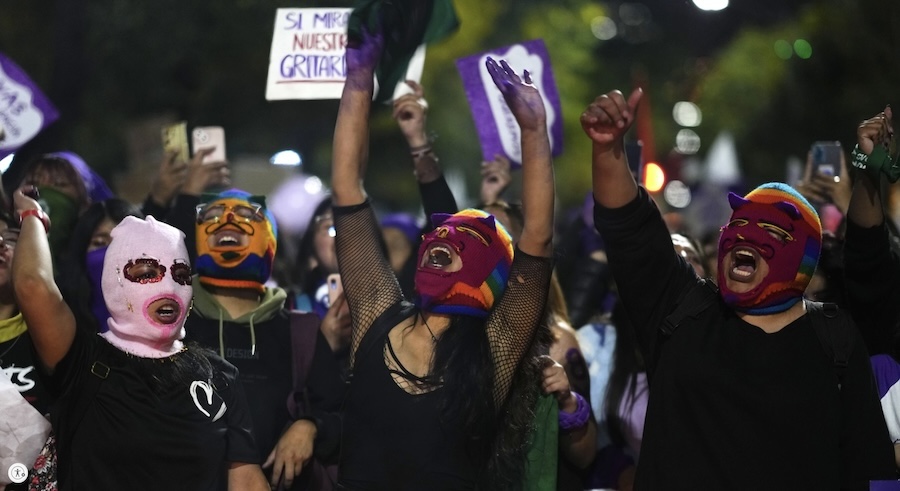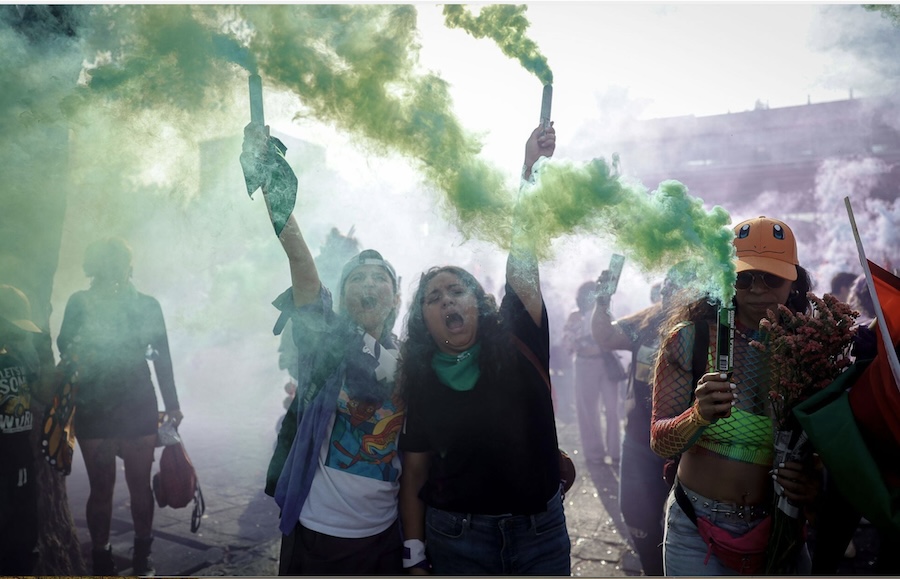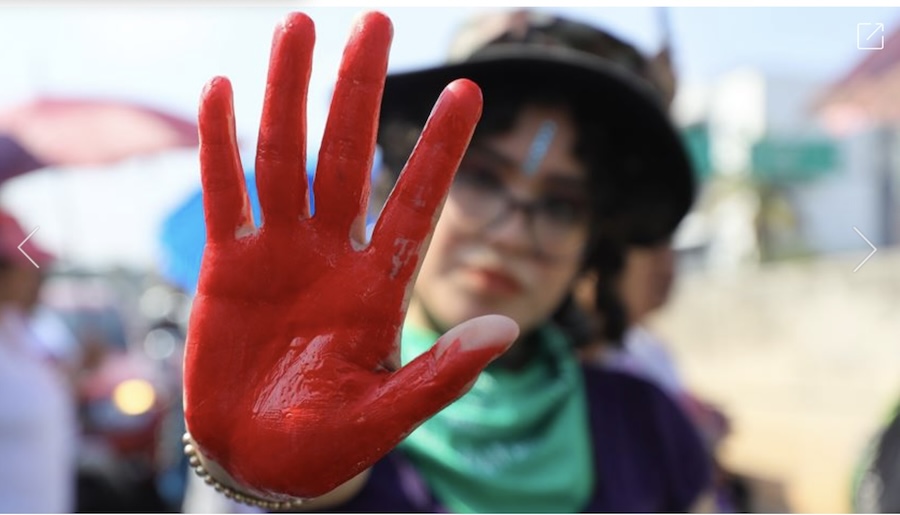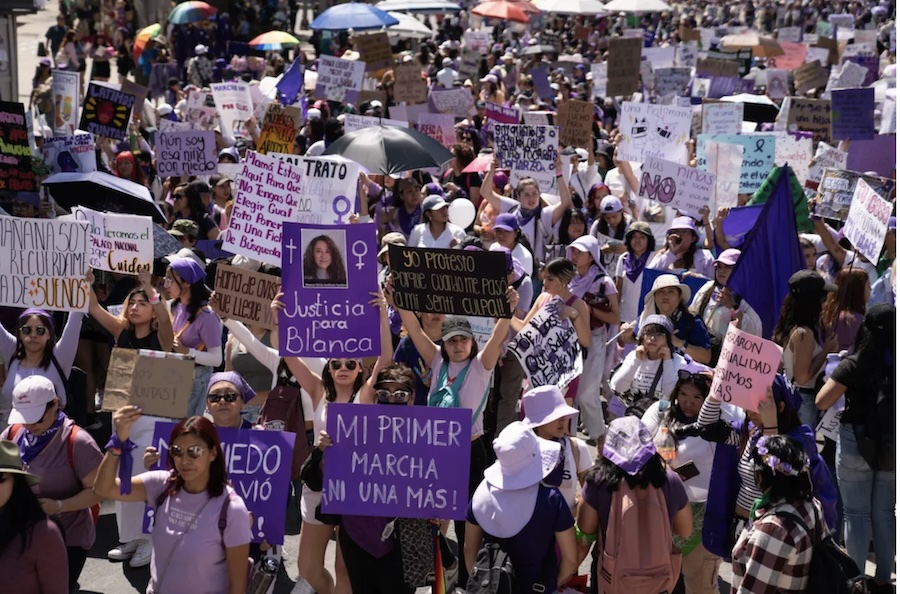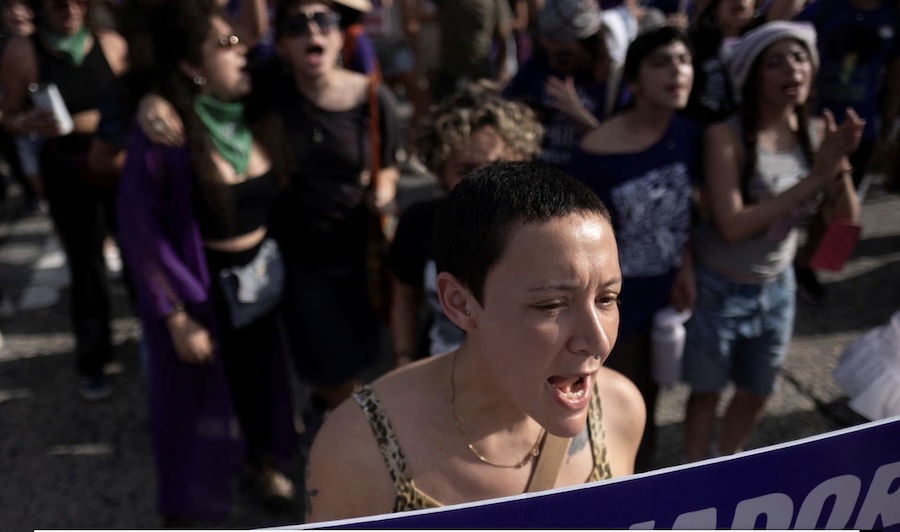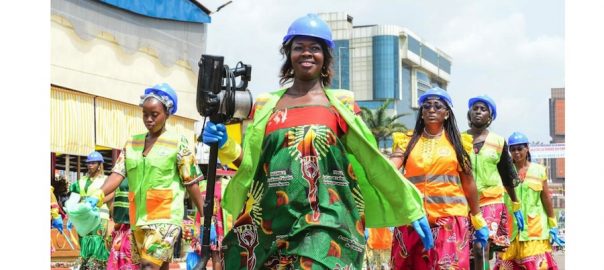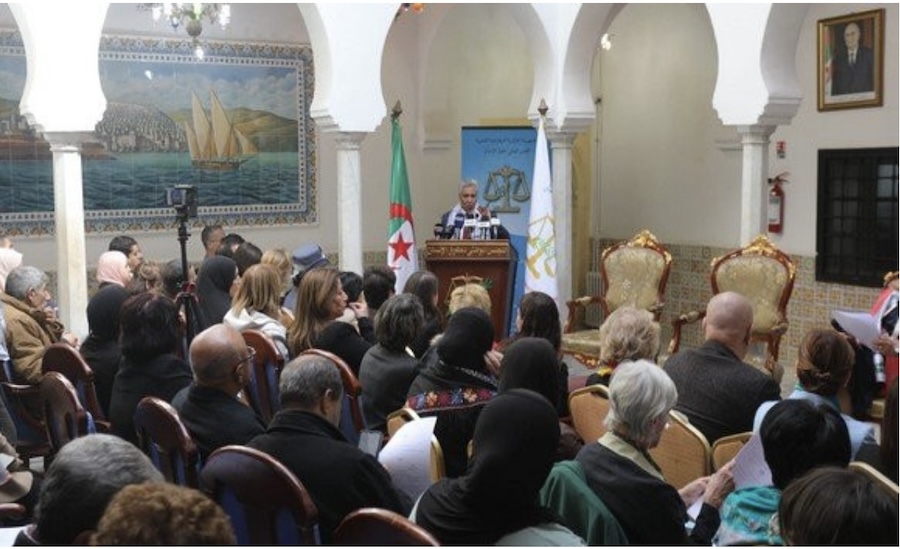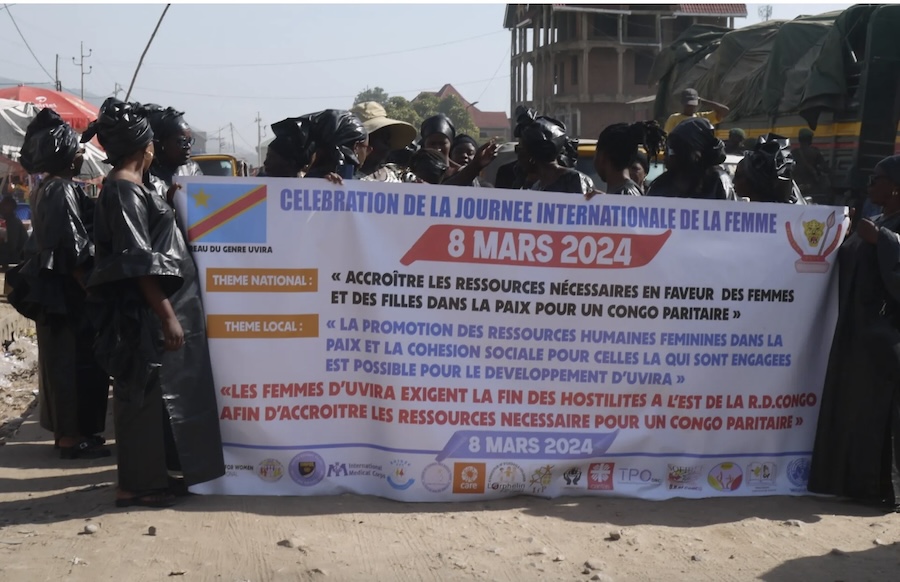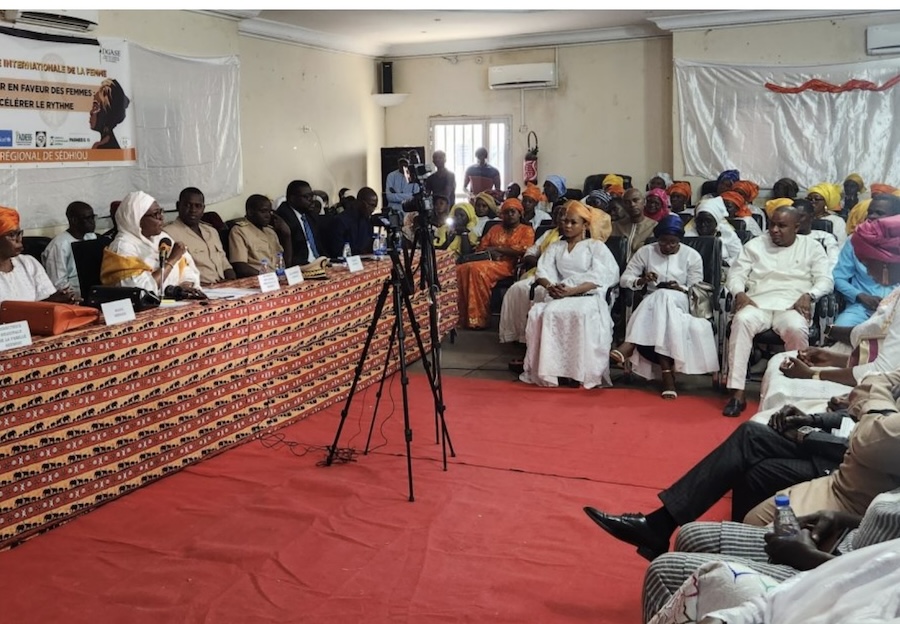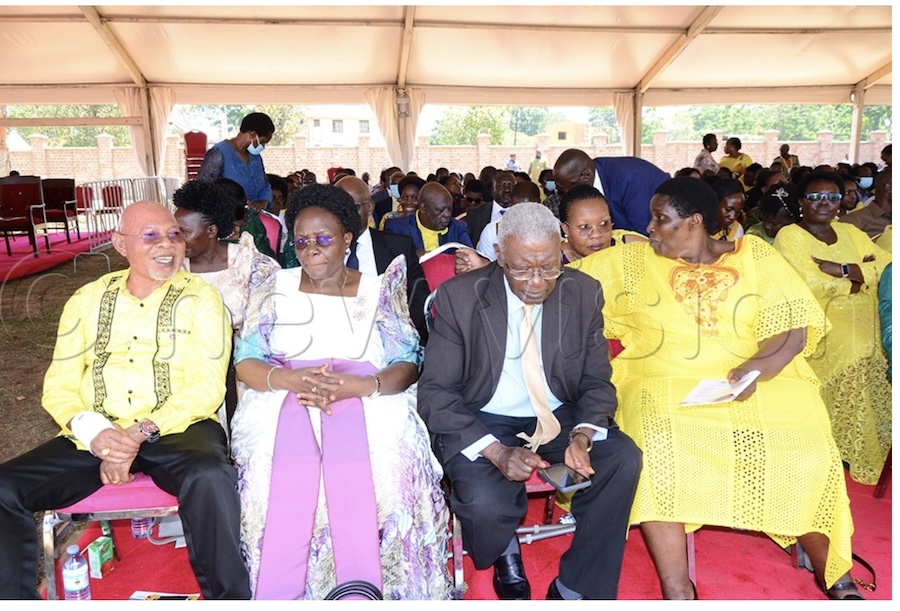. DEMOCRATIC PARTICIPATION .
Text transcribed from the video of the speech by Melanchon (transcribed and translated by CPNN)
My friends! “La force!” The force makes force. It’s a lesson from the trade unions. The force you see gathered here did not fall from the sky, was not granted as a favour. It was conquered by the commitment of free conscience that decided to break with all the other organised frameworks and make something new. That force is capable of raising the clamour that you have just heard here, which allows us to regain our energy. (. . .) That force is capable of engaging the new generation. That force is the people. We are the forward detachment. That force is a collective intelligence. Yes, we love electoral campaigns, because they suddenly make us consciously engaged
(. . . )
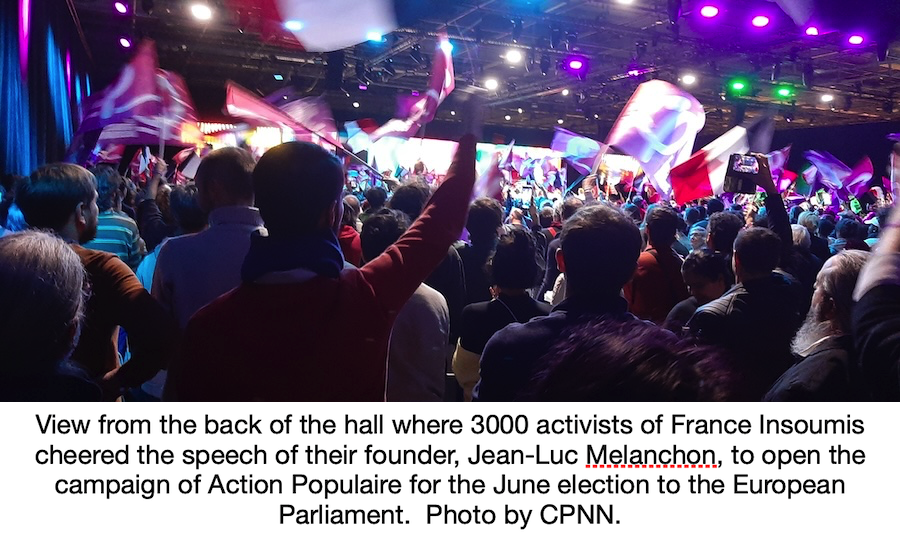
(Click on photo to enlarge)
We advance to meet our sovereign that is universal suffrage. We advance to meet that magical moment which moves every democratic conscience, every republican conscience, in the secret of the voting booth, the magnificent magic where no one has less power than another person because of their wealth. Where no one has less power than another person because of their religion or skin colour.
The right to vote ! Magnificent ! The free community, the free heart, the free conscience, in equality, in liberty, in fraternity. The right to vote is not only a citizen’s duty, it’s a dignity. And for all that, it is a power. A terrible power! A power that all the rulers fear because of the strength it gives to the most humble among us. That power that allows us to say with Angela Davis: “I will no longer accept. I will not accept the things that I could not change. I will change the things that I can no longer accept. ”
(. . .)
This is the first time that your ballot makes you the arm of Jean Jaures, as it started from his chest: if you do not want war, vote Insoumis!
(. . .)
We have passed from a Europe of social programs to a Europe of permanent austerity, of massive unemployment, of debt accumulated in its countries without any help from the Central European Bank which holds a large part of it and which increases interest rates so that the people, once again, must suffer even more.
At that time they told us at every election time, when there was the Soviet Union, that we were threatened by the tanks of the Red Army which were 48 hours from Paris. Now, the Union is no longer Soviet, it is content to be Russian, but the tanks are still there, it seems, and once again they are appearing in the electoral program.
So we have moved from the Europe of peace at the time of the Soviet Union to the Europe of war today and the war economy. This is what they have done to the great dream that the founding fathers had bequeathed to them. The question is not what we are going to do with this Europe, but how the people will be able to emerge from the permanent economic crisis in this Europe, from the logic of exploitation as the only adjustment variable to lower the price of labor. How will people be able to emerge from an ecological crisis caused and amplified by the European Union, which places no limits on the use of pesticides, which is not interested in the disastrous consequences for public health and which is incapable of holding its objectives in relation to climate change. Finally, a Europe incapable of making its mark in the world’s geopolitical crisis. This is the bottom line. This is the summary of what we have to do.
The world order is changing. The dominant power of the previous period, a power that believed for a time that it was the only one in the world, the United States of America, is today faltering, while another power is rising, what is called, unfairly but finally, let’s use this term, the Global South. It is the BRICS that are rising. They call us the “Westerners”. It seems that they mean us, but we, the French, are not so much “Westerners” as that, for we are present on every continent in the world. So please count us in a separate category: universalist, creolized, French.
Peace is at stake when the geopolitical order changes, because those who dominate want to continue to dominate and those who would like to dominate strive to find their place in a new domination. So more than ever, we must be the France aligned with the non-aligned. If we want to be useful, we must be France in the exclusive service of peace. If we want to be useful to universal humanity.
As usual we hear the braying of those who return with the memory of their own turpitude, they who capitulated as it was Munich, come to reproach us for saying that it is useless to expose ourselves to a war on the continent. Don’t think this is a threat in a vacuum! War results from the conditions that make it possible and necessary for some, but still war results from the inability of leaders to control their engagements. It was the assassination of an archduke that began the First World War. Today we are closer to the political conditions of the First War than those of the Second, when it was just and legitimate to arm ourselves to defeat the Nazis.
But this time it is a strange situation for France, a nuclear power, to be governed by people who are capable in a Council of Ministers of talking about an incident at Sciences Po and sending the Prime Minister there to change the situation and making a big deal out of something that never happened. But at least we can say that it produced something magnificent. Thirty-three students said “We are Jewish, and we will not allow our Jewishness to be used to suppress Palestinian rights.” Thank you young people, thank you a thousand times, thank you a million times, because this is the France that does not want its children to be sorted by their religion but only distinguished by their debate and their opinions.
To vote for the Insoumis is to vote for the unity of our republic, a vote that does not point the finger at any one religion or skin color.
(Article continued in the column on the right)
Where in the world can we find good leadership today?
How can parliamentarians promote a culture of peace?
(Article continued from the column on the left)
We must open the path to peace. Maybe some of you say that this path, yes, yes, well, okay, we understand, it is peace, but it does not exist, Mr. Mélenchon, the proof is that there is a war. Well, when there is a war, there is only one thing to do, and that is to stop it. And the question to ask is whether it is possible. Well all the elements are there.
For example, in Gaza, it is not true that we cannot stop the war and the massacre. It would be enough for the United States of America to stop supplying Mr. Netanyahu’s government with weapons. It would be enough for France to stop doing it. It would be enough for the European Union with the deputies you are electing to be there to say STOP! Enough! We are breaking the coalition and cooperation contract with Israel! We demand the judgment of war criminals, ALL war criminals, because we do not distinguish between them.
Regarding Gaza we are not proposing any other utopia than this: apply the international law that you voted for. Cease fire immediately and permanently! Implementation of UN resolutions. End of colonization! What’s extraordinary about that? It’s the same thing that we’ve been repeating for so many years. But then if we repeat it for so many years we tell them, at least respect the law, at least the international law that you have established!
The same goes for Ukraine. If we are not there to say a path exists, who is going to do it? There are people who will tell us “we have to arm ourselves, we’re going to do this, we’re going to do that!” Do what? Leading us straight to war? For what result? Only one result, massive destruction, death, death, more death!
War can produce nothing else except deaths, victims, desolation, destruction! War is the failure of the human condition. War is the failure of civilization. War! War will never produce anything other than war again! Always war, more war!
With regard to Ukraine peace is possible on the condition that we understand one thing, that fiinally there can be no other outcome than a situation where there is no neither victor nor vanquished. Peace must give each of the two parties mutual guarantees.
I heard a journalist choke up, “Mélenchon said mutual guarantees!” This ignorant person did not know that the word had been used by Mr. Macron himself ! The guarantees must be mutual between whom? The fighters, of course. Obviously the guarantees are mutual.
Once this principle has been established, then it is obviously necessary to enter the path of peace through concrete measures which suit both parties, such as the protection of nuclear power plants, which would lead instantly to the creation of demilitarized zones. The Ukrainian Parliament has requested this guarantee,, and the Russians have not said they are opposed to it.
And once we enter into this logic, then we enter into the logic of the ceasefire! And if there is a ceasefire, then we can discuss border security. Now little by little I see them coming to understand; it always takes them time to admit that we are right. With regard to a conference for border security, there is no need to invent structures. They already exist through the Organization for Security and Cooperation in Europe. Its conference on security in Europe was concluded in 1975, that is to say in the middle of the Cold War between two blocs that were preparing, if necessary, to destroy the world since they had the possibility of destroying it 16 or 17 times, which makes least 16 or 15 times too many.
A security conference obviously would lead to negotiations and from what President Macron told to Manuel Bompard, the Russians are ready for a ceasefire, but it’s to replenish their potential. Maybe so, but that’s what it takes. And when we start the ceasefire, well we don’t have to think about resuming the war.
Secondly, he told Manuel Bompard that President Zelensky was ready and knew that in the end he would have to accept a consultation of the populations affected by the borders. It’s clear from simple common sense that what was true before the war is perhaps no longer true now that the war has taken place, and that some who were originally on one side may now feel more on the other.
As soon as we agree to the ceasefire, as soon as we agree to the referendum of the populations concerned, as soon as we agree to demilitarize everything surrounding the nuclear reactors nuclear, then what is the obstacle to peace?
France may object that Mr. Putin is not a reliable interlocutor. But the effort must still be made. It must be brought before public opinion.
Threatening to send troops, saying that there are no limits, mentioning France’s nuclear capacity and claiming to extend it to all the nations of Europe, this is absurd ! Imagine a button which gives access to the use of the nuclear bomb, with 28 fingers on it! What is the meaning of such an idea? None! Whom is it supposed to frighten? The supposed adversary, thereby forcing him into a situation of response?
This is how the president has managed to create an indescribable mess, already with his own allies, but also with the adversaries because we already have Putin’s response. As for Mr. Putin, of course he is a dangerous head of state because he is a head of state involved in the question of peace and war! He therefore does in his domain what he believes to be his duty just as we ourselves do what we believe to be our duty.
We must talk peace! We must vote for peace! PEACE! PEACE! PEACE! That is our vote! Peace in Gaza! Recognition of the State of Palestine! Punishment of war criminals! Peace in Ukraine. PEACE! That’s why we have to vote ! It’s the vote that gives us force.
(…)
To conclude, I cite “Le Petit Prince,” that I suppose many of you have read. This is a citation for you. Listen carefully and reflect on it, because it is profound. “You see, in life there is no solution. There is only the forces on march. You must create them, and then the solutions will follow.” “Bon courage!”
– – – – – –
If you wish to make a comment on this article, you may write to coordinator@cpnn-world.org with the title “Comment on (name of article)” and we will put your comment on line. Because of the flood of spam, we have discontinued the direct application of comments.
 Video 5. Click on image to see the video
Video 5. Click on image to see the video